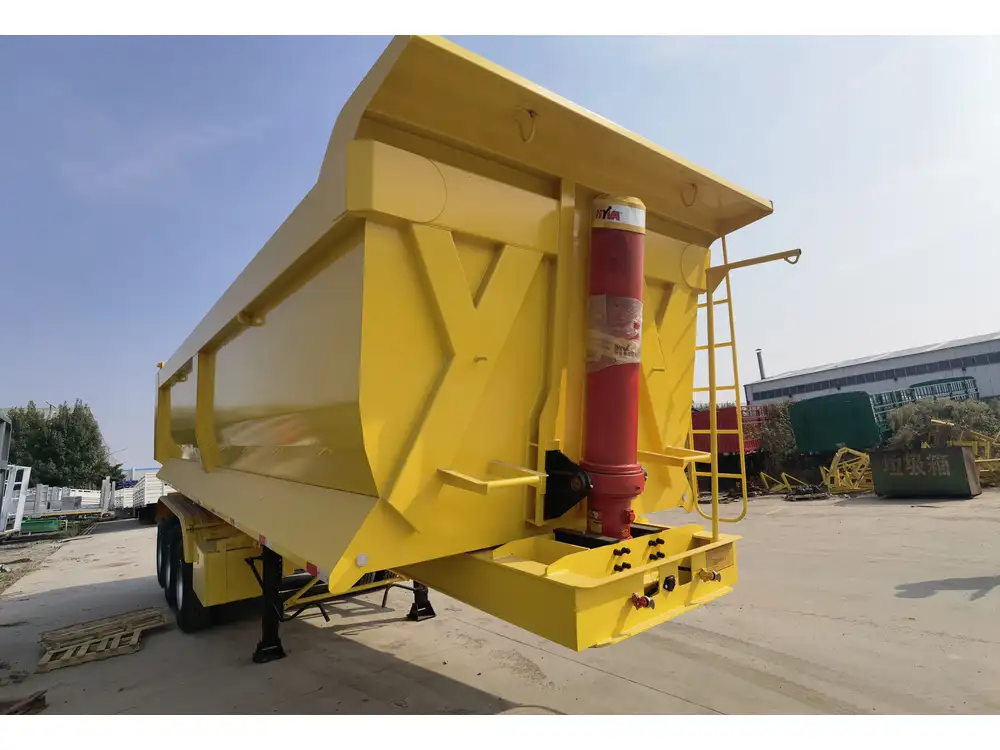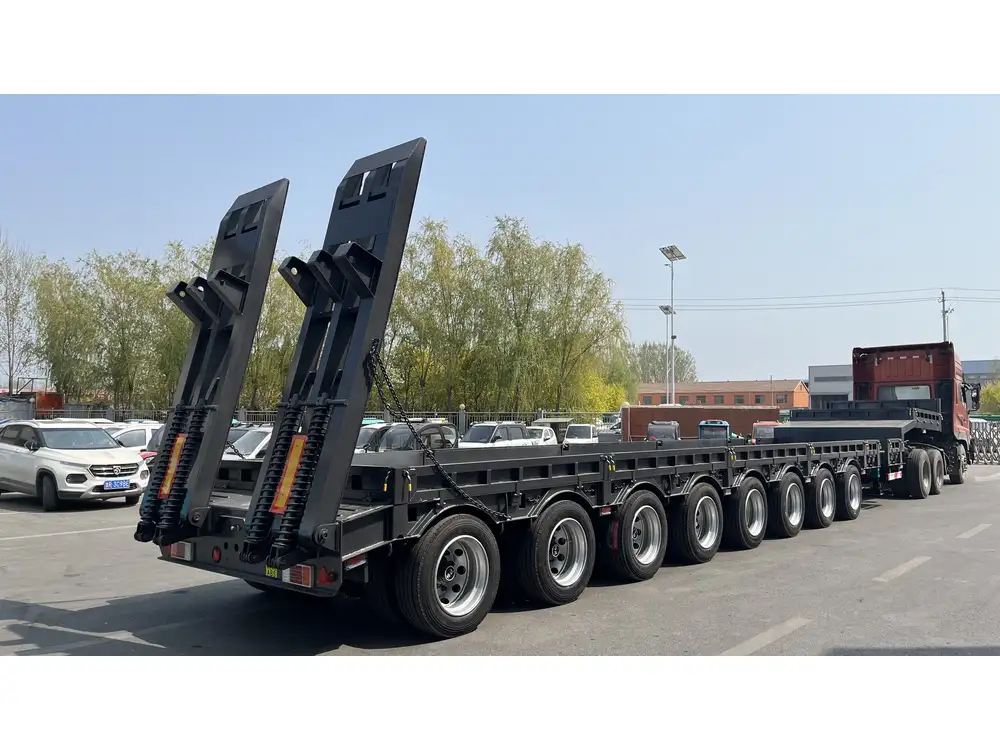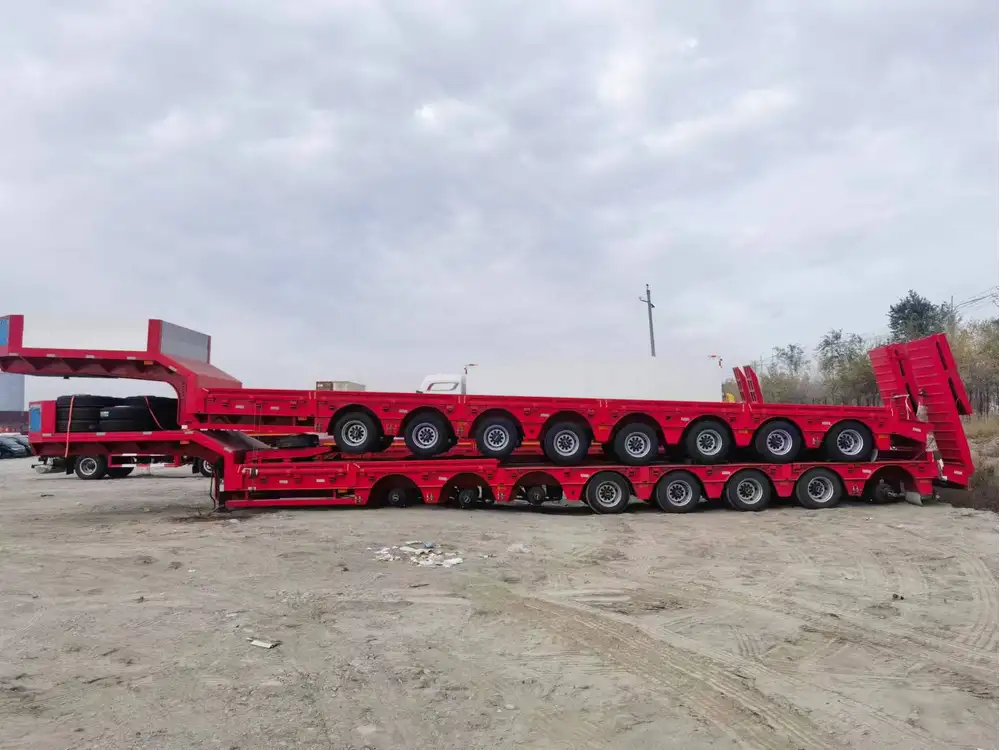When navigating the vast landscape of hauling materials, understanding the capacity of dump trailers becomes essential for manufacturers and contractors alike. Often, one of the most common queries arises: How many yards can a dump trailer hold? This question, simple on the surface, invites a dive into the details of dump trailer dimensions, weight capacities, and materials typically transported. In this article, we will address this question thoroughly while providing insights that can enhance your decision-making process.
Dump Trailer Basics
What is a Dump Trailer?
A dump trailer is a versatile tool in the construction industry, designed to haul a variety of materials, from dirt and gravel to debris and bulk materials. Unlike regular trailers, dump trailers come equipped with a hydraulic lift mechanism, allowing for easy unloading. This feature is particularly beneficial when handling heavy or cumbersome loads that traditional trailers cannot manage effectively.

Key Specifications of Dump Trailers
To address the question of yard capacity, one must first understand the dimensions commonly associated with dump trailers. Here are the typical specifications:
| Specification | Value |
|---|---|
| Height | 2.5 to 4.5 feet (empty) |
| Width | 5 to 8.5 feet |
| Length | 10 to 20 feet |
| Tare Weight | 3,000 to 5,000 pounds (varies by size) |
| Max Payload Capacity | 10,000 to 15,000 pounds |
Determining Volume: How Many Yards Does It Hold?
Understanding Cubic Yards
Cubic yards are a volume measurement frequently used in construction to quantify how much material a trailer can carry. To calculate this, you multiply the interior dimensions (length, width, and height) of the trailer and convert the resulting cubic feet into cubic yards.

Formula for Calculation
To determine how many cubic yards a dump trailer can hold, we use the formula: [ \text{Cubic Yards} = \frac{(\text{Length} \times \text{Width} \times \text{Height})}{27} ] where the dimensions are in feet.
Example Calculation
Let’s consider a standard dump trailer with the following dimensions:
- Length: 12 feet
- Width: 6 feet
- Height: 3 feet
Using the formula: [ \text{Cubic Yards} = \frac{(12 \times 6 \times 3)}{27} = \frac{216}{27} \approx 8 \text{ cubic yards} ] Thus, this trailer can hold approximately 8 cubic yards of material.
Trailers by Size

Small Dump Trailers (5 to 10 cubic yards)
Ideal for smaller projects, these trailers are convenient for residential jobs, landscaping, and small renovation projects. Generally, they have a payload capacity ranging from 2,000 to 6,000 pounds.
| Model | Cubic Yards | Payload Capacity |
|---|---|---|
| 5×8 Dump Trailer | 5 cubic yards | 2,000 pounds |
| 6×10 Dump Trailer | 7 cubic yards | 6,000 pounds |
| 7×14 Dump Trailer | 10 cubic yards | 8,000 pounds |
Medium Dump Trailers (10 to 15 cubic yards)
These trailers accommodate larger loads, frequently used in commercial and industrial applications. Ranging up to 10,000 pounds payload capacity, they strike a balance between size and maneuverability.
| Model | Cubic Yards | Payload Capacity |
|---|---|---|
| 7×10 Dump Trailer | 10 cubic yards | 10,000 pounds |
| 8×12 Dump Trailer | 12 cubic yards | 12,000 pounds |
| 8×14 Dump Trailer | 14 cubic yards | 15,000 pounds |
Large Dump Trailers (15 cubic yards and beyond)
Ideal for large-scale construction sites or heavy-duty hauling, these trailers transport substantial amounts of materials. Weighing more than 2,000 pounds empty, their payload capabilities can exceed 15,000 pounds.
| Model | Cubic Yards | Payload Capacity |
|---|---|---|
| 8×16 Dump Trailer | 16 cubic yards | 16,000 pounds |
| 10×20 Dump Trailer | 20 cubic yards | 18,000 pounds |
| 10×24 Dump Trailer | 24 cubic yards | 20,000 pounds |

Factors Affecting Dump Trailer Capacity
Understanding the carrying capacity of dump trailers isn’t merely about volume—it’s also about weight. Here are the critical aspects to consider:
Material Density
Different materials have varying weights. For instance, one cubic yard of dirt weighs around 1,200 pounds, while a cubic yard of gravel can weigh up to 1,500 pounds. This means that while the volume may fit, the weight may exceed your trailer’s rated capacity.
Legal Weight Limits
Compliance with road regulations is crucial. Every state has its restrictions on weight limits, which includes both the trailer and its contents. Exceeding these limits can lead to fines, damage to the vehicle, and road safety issues.

Trailer Structural Integrity
A well-constructed trailer can handle its maximum load over time without failure. Regular maintenance checks on components like wheels, axles, and hydraulic systems are essential to ensure safety.
Applications of Dump Trailers
Construction Projects
Used extensively on construction sites, dump trailers transport materials such as dirt, gravel, and sand, making them vital for the foundational work.

Landscaping
Professionals in landscaping benefit significantly from dump trailers, making it easy to convey mulch, soil, and plants—all essential for creating beautiful outdoor spaces.
Demolition and Clean-up
For demolition projects, these trailers provide the capacity necessary to haul debris and waste efficiently, ensuring that job sites remain clear and organized.
Agriculture
Farmers use dump trailers for efficiently moving feed, fertilizer, manure, and other bulk materials, emphasizing their versatility across industries.

Tips for Maximizing Your Dump Trailer’s Efficiency
Load Distribution
Properly distributing weight within the trailer can prevent swaying and improve control during transportation. Place heavier items on the bottom and towards the front.
Regular Maintenance
Routine checks on tires, brakes, and hydraulic systems can extend your trailer’s lifespan, optimizing its performance during use.

Utilize Tie-downs
Securing loads with straps and tie-downs not only keeps materials in place but also increases safety for both the driver and other road users.
Stacking Material
In instances where the contents allow, stacking materials efficiently can maximize your load’s cubic capacity, thus saving you time and reducing trips.
Conclusion
Understanding the holding capacity of dump trailers (in cubic yards) is crucial for effective planning and execution of various hauling tasks. By considering dimensions, weight constraints, and the specific types of materials being transported, users can maximize efficiency and safety while ensuring compliance with regulations. This comprehensive evaluation empowers manufacturers to adapt and innovate in the field, ensuring that their dump trailers meet the evolving needs of users across different industries.
With a diverse range of sizes available, there is a dump trailer tailored to fit your specific requirements, whether for residential landscaping or large-scale construction projects. Equip yourself with this knowledge, and explore the many possibilities that dump trailers present in your hauling endeavors.



